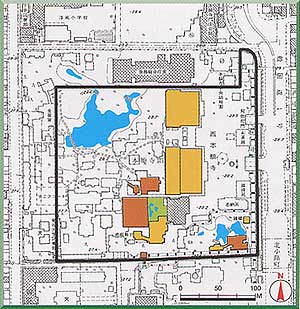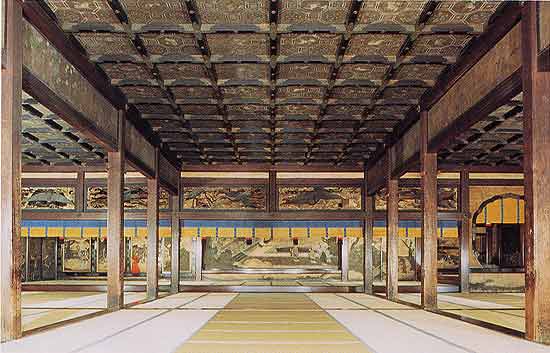| JAPANESE | |
| P. Hongwan-ji | |
| The compilation on the gorgeous and splendor Momoyama culture | |
| Establishment: Restoration in the latter term of the 16th century (1591) | |
| Hongwan-ji is the main temple of the Hongwan-ji subsect of the Jodo Shinshu
sect founded by Shinran. Initially founded in Kyoto's Higashiyama area
in the 13th century, Hongwan-ji was moved to a succession of locations,
and finally relocated in 1591 to its present site when Toyotomi Hideyoshi
gave the land to the temple. The temple buildings were arranged immediately
after the move, and by 1633 the complex was configured as it is today. The Shoin, built in 1618 in the grand shoin-zukuri style, comprises the Taimenjo or Reception Room (also called as the Ko-no-ma), used for public receptions, and the private space of the Shiroshoin. The karesansui (dry landscape) style rock garden known as the Kokei no Niwa is simple in structure, with representation of waterfalls, streams and ocean; at the same time, it expresses the boldness and grandeur of the Momoyama Period in its use of such elements as rocks and sago palms. The Hiunkaku is a three-storied structure overlooking the pond in the Tekisuien Garden and has the bizzare appearance and an airy structure. |
 |
 |
|
| Photo by Kanzaki Junichi | |
Map of "Historic Monuments of Ancient Kyoto" |
|